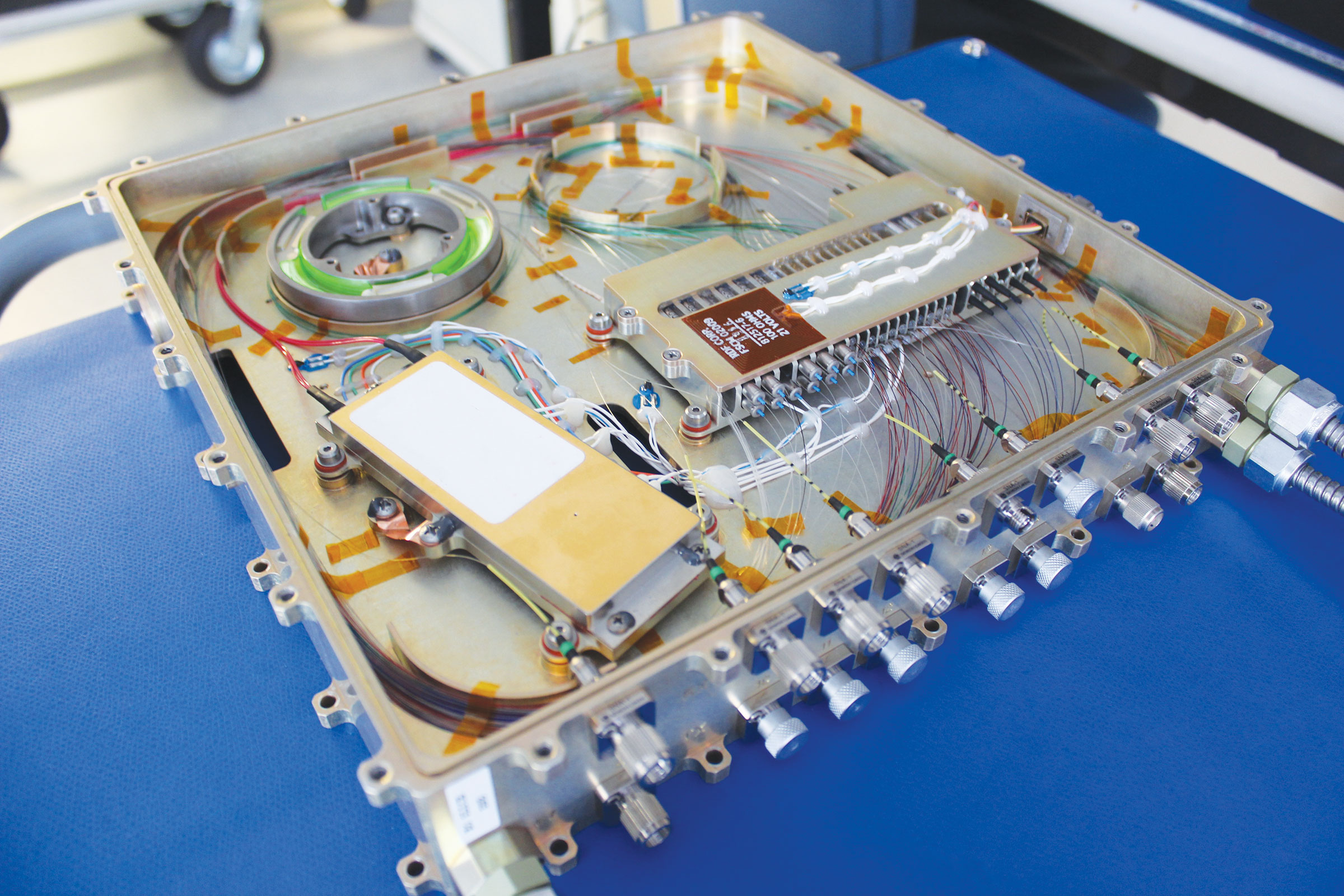Multi-rate Differential Phase Shift Keying Optical Communications

MIT Lincoln Laboratory developed the multi-rate DPSK format, which uses a single, easy-to-implement transmitter and receiver design to achieve free-space optical communications (FSOC) over a wide range of data rates with nearly ideal performance. Multi-rate DPSK is especially useful for dynamic FSOC systems because it allows efficient operation over an extended range of channel losses, link distances, and/or terminal types — making it an attractive paradigm for emerging space-based FSOC applications.

Advantages of Multi-rate DPSK
Because conventional DPSK receivers require customized optical filters and delay-line interferometers (DLIs) for each data rate to achieve good performance, multi-rate capability is cumbersome to implement, especially for space-based systems constrained by size, weight, and power (SWaP) requirements. Lincoln Laboratory constructed space-compatible DPSK multi-rate modems with near-theoretical communication performance over a wide dynamic range of rates and received input power levels. This multi-rate capability provides valuable architectural flexibility for free-space applications by extending the operational range of receiver power levels to enable bandwidth on demand when conditions are favorable, fallback modes, and the ability to operate with a variety of link conditions (e.g., distance and channel state) and transmitter and receiver designs. Furthermore, multi-rate DPSK designs can be easily implemented with SWaP-efficient integrated-photonic designs that can readily scale to higher rates via multichannel wavelength division multiplexing.
Benefits
- Achieved multi-rate operation from 2.4 to 2500 Mbit/s (a factor of 1000×) on a single optical wavelength with record receiver sensitivity
- Can scale to higher data rates by using conventional wavelength division multiplexing (WDM) and be implemented with dramatically reduced SWaP via photonic integration
- Complies with emerging Near-Earth Optical High Data Rate standards established by the Consultative Committee for Space Data Systems (CCSDS)
Additional Resources
U.S. Patents 7,181,097; 7,414,728; 9,647,765; and 10,075,245
More Information
D.O. Caplan, et al., “Multi-rate DPSK Optical Transceivers for Free-Space Applications,” Proceedings of SPIE 8971, 25 March 2014.
2018 R&D 100 Award winner